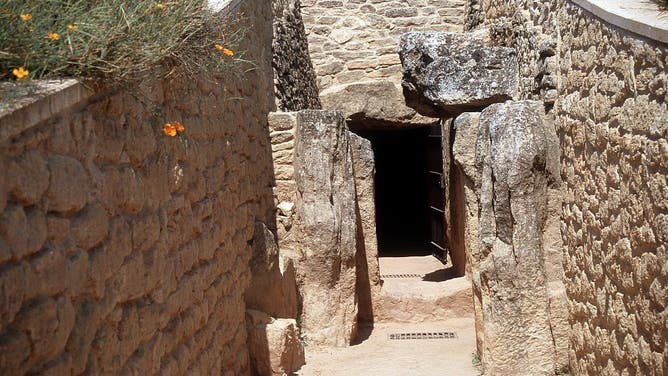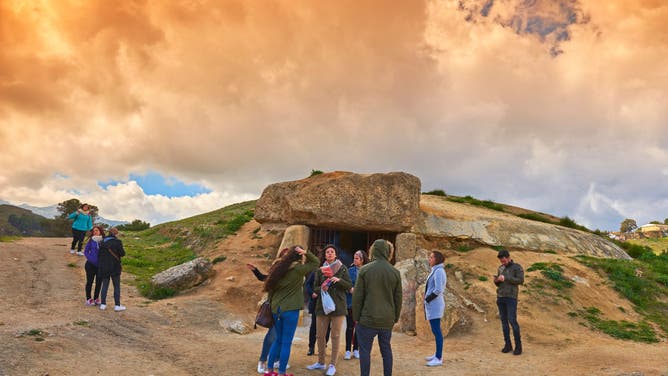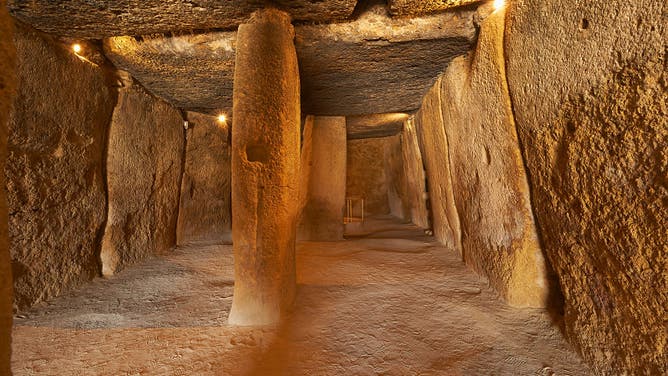6,000-year-old ancient stone architecture reveals advanced engineering skills, astounding researchers
A groundbreaking study published in the Science Advances suggests that builders of a massive stone chamber built nearly 6,000 years ago was constructed using complex principles of geology, physics, geometry, astronomy and architecture.
Historical drought reveals history
As drought and record heat span the globe, bodies of water have evaporated and history has appeared.
ANTEQUERA, Spain – A colossal stone monument in southern Spain was the focus of a decade-long study that revealed the remarkable sophistication of its construction, leaving researchers astounded by the advanced engineering techniques.
The Dolmen of Menga is located in Spain’s Antequera region and is thought to have been constructed some 6,000 years ago.
The site was used for burials and served as a cultural symbol during the Neolithic period, but researchers concentrated their studies on the structure’s construction, for which they stated, "We know of no precedents in Iberia."
The construction techniques employed in the Dolmen of Menga are thought to be comparable to those used in much more recent megastructures. However, researchers remain uncertain how the indigenous people acquired such traits.
"Its extraordinary dimensions demanded sophisticated design and planning, a large mobilization of labor, as well as perfectly executed logistics," researchers stated.

Google Map of the Dolmen of Menga
(FOX Weather)
SEE THE OBJECTS HUMANS LEFT BEHIND ON THE MOON
It is believed that builders employed advanced principles of geology, physics, geometry, astronomy and architecture, despite these concepts being relatively sophisticated for their time period.
Craftsmen are thought to have used dozens of giant stone blocks weighing more than 165 tons for the roof, pillars and other support structures, which still are in place today.
Historians believe techniques including rail, counterweights and other methods were likely used to complete the structure, which in some areas measures more than 11 feet tall and 20 feet wide.
Despite the area’s susceptibility to weather extremes and earthquakes, the stability of the structure appears to have been unaffected.
"On the basis of the evidence at hand, Menga is one of the first great monumental buildings ever engineered with colossal stones," researchers stated. "Not only no precedents existed in Iberia for such a monument when Menga was built, but also no comparable monument was later made throughout all of Late Prehistory. Or at least, we have no record left."
VACATIONS ACROSS AMERICA: TRAVEL TO AMERICA’S OLDEST CITY
The Dolmen of Menga was made a UNESCO World Heritage Site in 2016.
The designation is reserved for places that historical experts consider to have a profound impact on humanity.
The pyramids in Egypt, the Great Barrier Reef off Australia, and the Taj Mahal in India are just some of the more than 1,200 historical sites worldwide.
Italy is home to the most historic sites, with 60 locations protected by the United Nations Educational, Scientific, and Cultural Organization.



